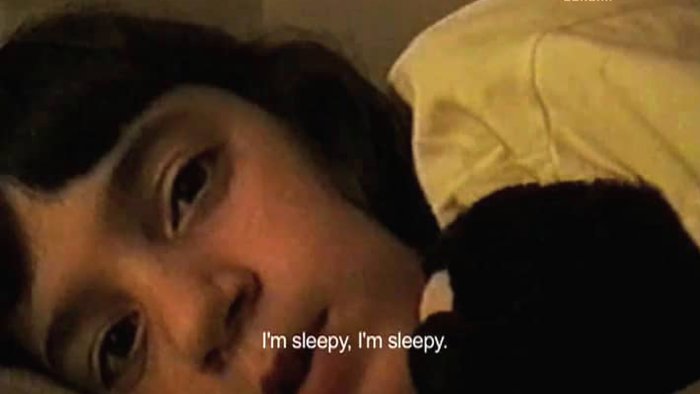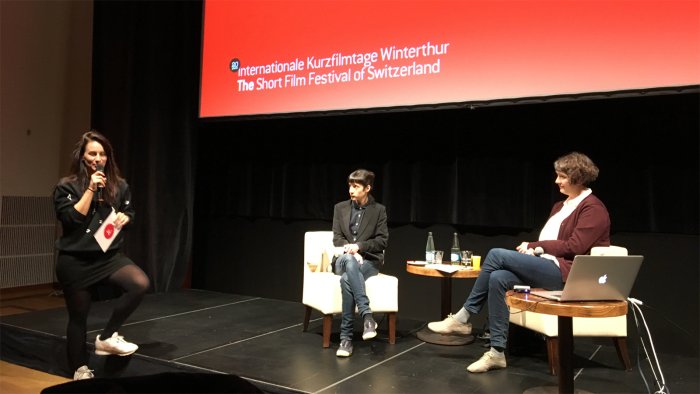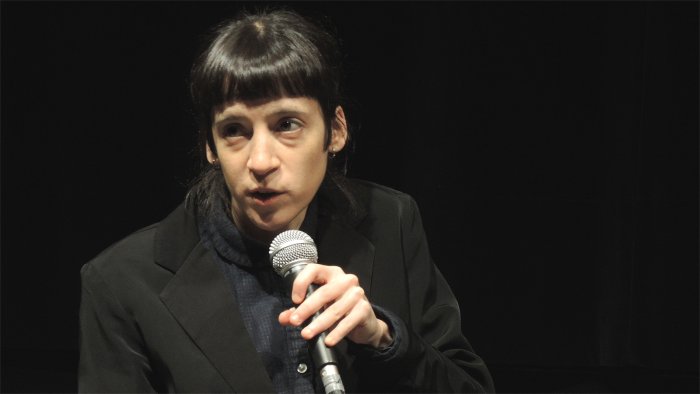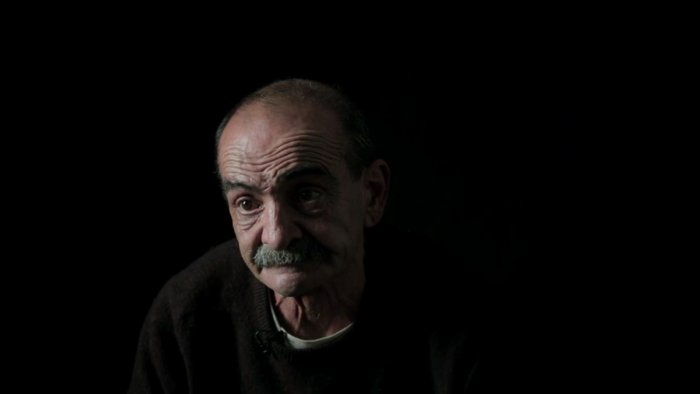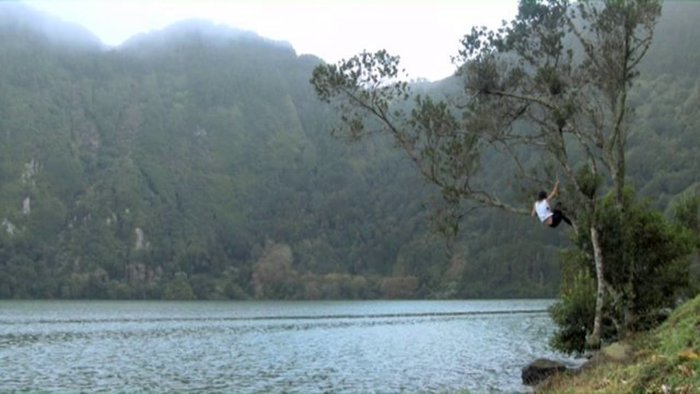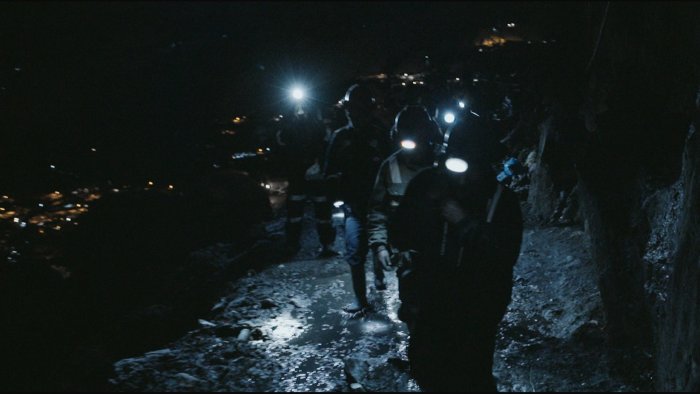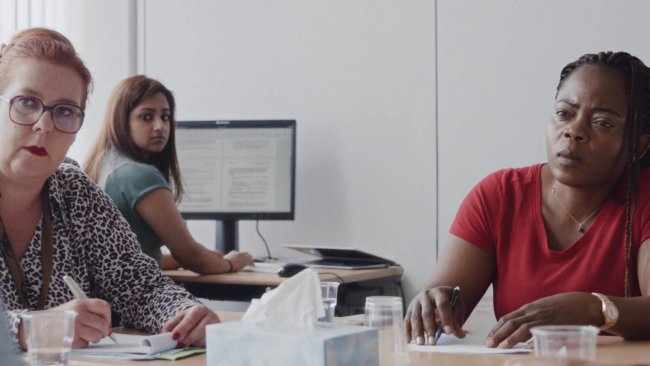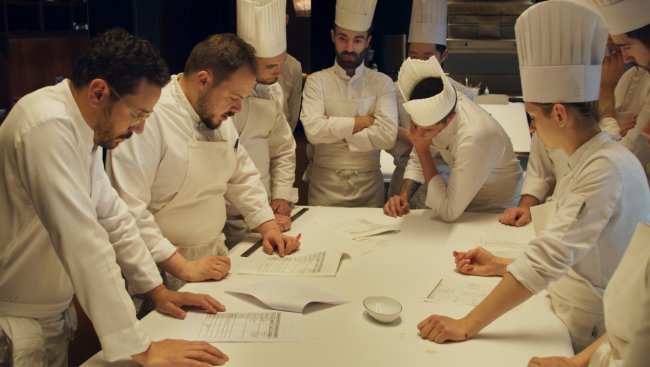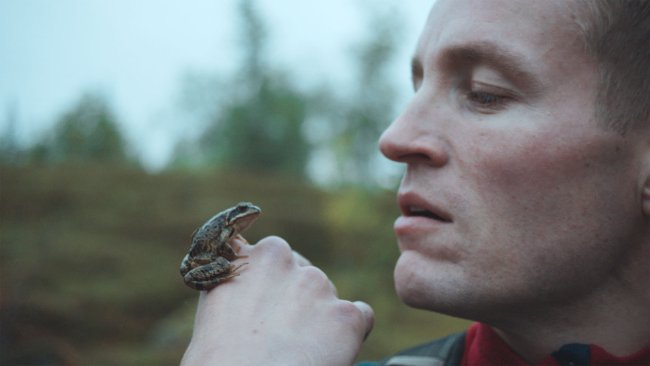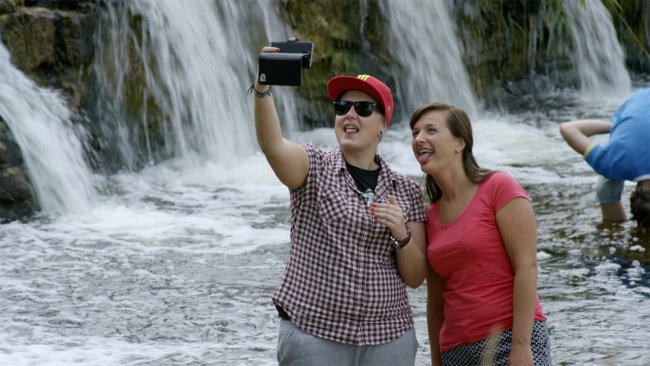Salomé Lamas in Switzerland
[…] All of the ingredients of the young and mature Portuguese filmmaker are there: a dramatic tension created with simple elements, the insistence on a single frame, the relative independence of sound and image, the necessary ambiguity of a documentary practice of balancing fictional storytelling with factual documents, and a constant switch from the level of what is seen and heard to the meta-level of a reflection on the former level, which arouses the very classical formal questions concerning film and filmmaking.
[…] Here, the performative dimension of human beings playing with the limits of both space and the filmic image clearly emerge, as does the use of the voice and the sounds as an autonomous character.
[…] In this film, the storytelling function is entirely given to the interviewed person, Paulo, thus intentionally avoiding a rigid distinction between facts and fiction.
Text: Giuseppe Di Salvatore | Audio/Video: Ruth Baettig
Podcast
Salomé Lamas: 1) above: Masterclass (first part); 2) above: Masterclass (second part); 3) below: Q&A with Delphine Jeanneret
Recorded at the Internationale Kurzfilmtage Winterthur 2016
Find a list of all our Podcasts here.
The recent presence of Salomé Lamas in Switzerland is certainly one of the biggest film highlights in the last months. Her film installation at the Biennale de l’Image en Mouvement (BIM) in Geneva, The Burial of the Dead, and the screenings at the Internationale Kurzfilmtage Winterthur, where she also gave a masterclass, has provided the occasion for a deeper understanding of her uncompromising work.
I would like to single out her VHS - Video Home System (2010-2012) as one possible key to enter into her world. In this film, she tries to complete an artistic essay of her mother, whose idea was to film her as an eight-year-old child trying to fall asleep, saying “I’m asleep” (“sto com sono”, in Portuguese) over and over again. She uses the VHS rushes, and adds only few comments of her and her mother talking about the experiment to this archive material. It was an almost hypnotic game, but also a game of tension, of resistance and make-believe – Salomé still says she never fell asleep, but only made her mother believe that she had. The nearly thirty-minute-long take of her struggling between the mantra expression and sleep is an explicit challenge for the audience that cannot help but start reacting to or interacting with the screening. All of the ingredients of the young and mature Portuguese filmmaker are there: a dramatic tension created with simple elements, the insistence on a single frame, the relative independence of sound and image, the necessary ambiguity of a documentary practice of balancing fictional storytelling with factual documents, and a constant switch from the level of what is seen and heard to the meta-level of a reflection on the former level, which arouses the very classical formal questions concerning film and filmmaking.
This specific cocktail of elements comes back in her different works to create a particular style, where the accuracy and the beauty of images meet a minimalist treatment of them. This is particularly clear in her different films concerning a confrontation with the landscape and the natural elements, which were selected by Delphine Jeanneret in a section of screenings at Winterthur, Reclaiming Landscapes. Here, the performative dimension of human beings playing with the limits of both space and the filmic image clearly emerge, as does the use of the voice and the sounds as an autonomous character. In fact, very often the sound, and sometimes the voice-over, give a dynamism to the films, whose image layer is often made-up of wide static takes with many elements to explore during the long screening times.
The same performative attitude is present also in her films where she faces individuals. To this respect, a relevant part of the masterclass at Winterthur, which was moderated by Emilie Bujès (Deputy Artistic Director at Festival Visions du réel), highlighted two documentary films, both concerning her meeting with a former French legionnaire and mercenary: No Man’s Land (2012) and Le boudin (2014). In the former, for example, the use of the camera as a fixed frame in which one leaves room for improvisation – a device Lamas had already applied in her Encounters with Landscape (3x) – reveals itself to be a good solution to the ethical question of exploiting a suffering witness in a documentary. In this film, the storytelling function is entirely given to the interviewed person, Paulo, thus intentionally avoiding a rigid distinction between facts and fiction. As clearly stated by Lamas’ in the Masterclass (hear our recording of it), her interest is not only directed to Paulo’s story, but more generally to the form of storytelling as the «crystallization of history». Even more clearly playing with the fictional reconstruction is the film Le boudin, which treats the same material as in No Man’s Land, allowing us to compare the two different forms she chose to work with.
Another passionate discussion on formal aspects occupied a second relevant part of the Winterthur Masterclass. Salomé Lamas discussed at length about her superb most recent film Eldorado XXI (2016), and then about the advantages and disadvantages of its installation version for three screens, The Burial of the Dead (2016), commissioned by the Biennale de l’Image en Mouvement in Geneva, where it is now visible at the Centre d’Art Contemporain (until the 29th of January 2017). Lamas acknowledges the importance of the one screen situation of the cinema theatre because one can best concentrate on the work and take advantage of the best possible sound conditions. But she tries also to defend the installation version, which made her stress other aspects of the work and solve some particular problems such as the reading of the subtitles. Our recording of the Masterclass gives some precious hints regarding these and other fascinating topics concerning the aesthetics and works of Salomé Lamas, thanks to the precision and generosity of this outstanding artist.
An artist book dedicated to Salomé Lamas’ selected production (2010-2016), with the contributions of many authors, Parafiction (Selected Works), will be soon published by Mousse Publishing.
Info
Salomé Lamas | Masterclass | Internationale Kurzfilmtage Winterthur
Salomé Lamas | The Burial of the Dead | Film Installation | Biennale de l’Image en Mouvement BIM Genève
First published: November 22, 2016
